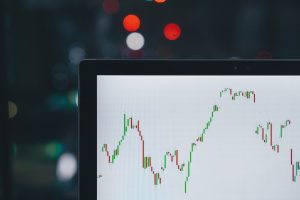Forex and currency futures are two types of financial instruments that allow traders to invest in the foreign exchange market. While they may seem similar at first glance, there are key differences between the two that investors should be aware of before deciding which one to use.
Forex, or foreign exchange, is the largest and most liquid financial market in the world. It involves buying and selling currencies with the aim of making a profit from the fluctuations in their exchange rates. Forex trading is typically done over-the-counter, meaning that trades are conducted between two parties without the involvement of an exchange.
Currency futures, on the other hand, are contracts that are traded on a centralized exchange. These contracts are agreements to buy or sell a specific currency at a predetermined price and date in the future. Currency futures are standardized, meaning that all contracts have the same size and expiry date.
One of the main differences between forex and currency futures is the size of the market. Forex is an over-the-counter market, which means that it is decentralized and operates 24 hours a day, five days a week. This makes it the largest financial market in the world, with an average daily trading volume of over $5 trillion.
Currency futures, on the other hand, are traded on a centralized exchange and have a smaller market size. The Chicago Mercantile Exchange (CME) is one of the largest exchanges for trading currency futures, with an average daily trading volume of around $100 billion.
Another key difference between forex and currency futures is the level of leverage available to traders. Forex trading allows for high levels of leverage, which means that traders can control larger positions with smaller amounts of capital. This can lead to larger profits, but also larger losses if the trade goes against the trader.
Currency futures, on the other hand, have lower levels of leverage available. The margin requirements for currency futures contracts are set by the exchange and are typically higher than those for forex trading. This means that traders need to have more capital available to trade currency futures than they would for forex.
One of the benefits of trading currency futures is the transparency and regulation provided by the centralized exchange. All trades are cleared through the exchange, which means that there is no counterparty risk. This makes currency futures a safer option for traders who are concerned about the creditworthiness of their trading partner.
Forex trading, on the other hand, is done over-the-counter, which means that there is no centralized exchange. This can lead to counterparty risk, as traders need to rely on the creditworthiness of their trading partner. However, forex brokers are regulated by financial authorities in their respective jurisdictions, which provides some level of protection for traders.
Another difference between forex and currency futures is the trading hours. Forex trading operates 24 hours a day, five days a week, while currency futures are only traded during specific hours on the exchange. This can be an advantage or disadvantage depending on the trader’s strategy and availability.
In conclusion, forex and currency futures are two different financial instruments that provide access to the foreign exchange market. While they may seem similar at first glance, there are significant differences between the two that traders should be aware of before deciding which one to use. Forex trading is done over-the-counter and has higher levels of leverage available, while currency futures are traded on a centralized exchange and have lower levels of leverage. Both instruments have their advantages and disadvantages, and traders should choose the one that best suits their trading style and risk tolerance.






